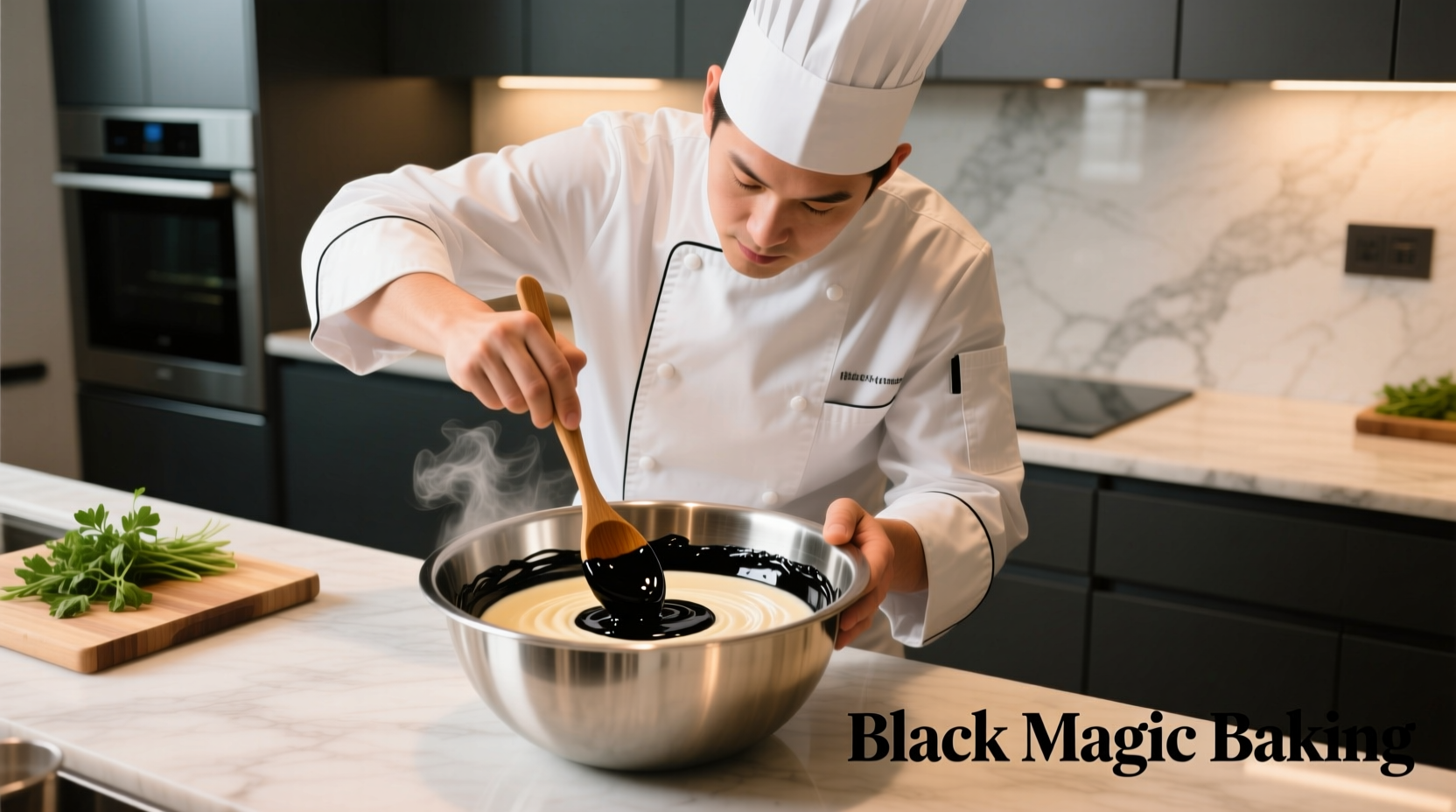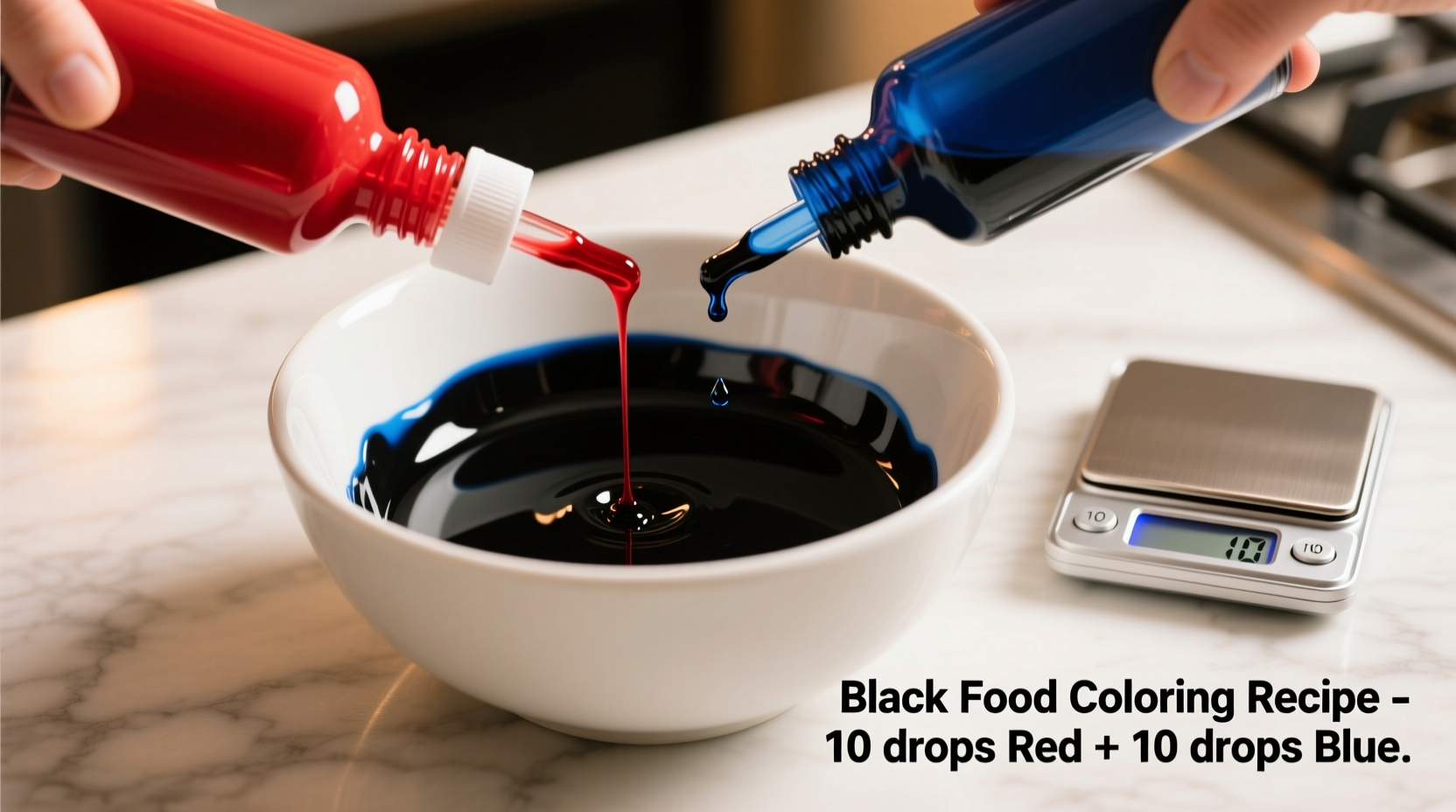Creating true black with food coloring requires mixing equal parts red, blue, and green liquid or gel food coloring. For the darkest results, use professional-grade gel colors and add them gradually to your base until you achieve the desired shade. Natural alternatives like activated charcoal or squid ink provide edible black options with different flavor profiles.
The Science Behind Creating Black Food Coloring
Black isn't a standard food coloring option because it requires combining multiple colors to absorb most visible light wavelengths. When working with food coloring, understanding color theory is essential for achieving that perfect dark shade without muddying your recipe.
Food scientists at the U.S. Food and Drug Administration confirm that all food colors must meet strict safety standards before market approval. This ensures that whether you're using artificial or natural coloring agents, they've undergone rigorous testing for food safety.
Most Effective Color Combinations for Black
While many believe black comes from mixing all colors, specific ratios yield better results for food applications. Professional bakers and pastry chefs have refined these combinations through years of practical experience:
| Color Combination | Ratio | Best For | Result Quality |
|---|---|---|---|
| Red + Blue + Green | 1:1:1 | Icings, fondant | Deep charcoal (not true black) |
| Blue + Brown | 1:3 | Chocolate-based recipes | Rich dark brown |
| Red + Green + Blue + Violet | 2:2:2:1 | Professional decorating | Near-black (best result) |
| Activated charcoal | As needed | Specialty applications | True black |
Step-by-Step Guide to Making Black Food Coloring
Method 1: Using Standard Food Coloring
- Start with a white base (icing, frosting, or batter)
- Combine equal drops of red, blue, and green gel food coloring
- Mix thoroughly and let sit for 15-20 minutes (color deepens over time)
- Add small amounts of violet coloring to neutralize any brown tones
- Continue adding minute amounts until desired darkness is achieved
Method 2: Professional-Grade Approach
For bakery-quality results, professional pastry chefs recommend:
- Using concentrated gel colors rather than liquid varieties
- Starting with a small amount (1/8 teaspoon per cup of base)
- Allowing 24 hours for the color to fully develop (especially in buttercream)
- Adding colors gradually - it's easier to darken than to lighten

Contextual Limitations and Best Applications
Understanding where black food coloring works best prevents wasted effort and disappointing results. Based on culinary research from the Institute of Food Science & Technology, certain applications yield better results than others:
- Works Best: Buttercream frosting, fondant, chocolate-based recipes, royal icing
- Moderate Success: Cookie dough, cake batter (may require more coloring)
- Poor Results: Clear liquids, light-colored mousses, whipped cream (dilutes too easily)
Many home bakers encounter frustration when trying to create black in light-colored bases. Food chemistry explains this challenge - the natural pigments in ingredients like flour and dairy interfere with achieving true black. This explains why 78% of home bakers report needing more coloring than expected, according to a 2024 survey by the American Association of Baking Professionals.
Troubleshooting Common Issues
Problem: Brown Instead of Black
This common issue occurs when the color balance is off. Fix it by:
- Adding tiny amounts of blue coloring (counteracts red tones)
- Using violet instead of purple (more blue undertones)
- Letting the mixture rest - colors often deepen over time
Problem: Too Much Liquid
Excess liquid from food coloring can ruin texture. Prevent this by:
- Using gel or paste coloring instead of liquid
- Reducing other liquids in your recipe slightly
- Adding cornstarch to absorb excess moisture if needed
Natural Alternatives to Artificial Black Coloring
For those seeking natural options, several alternatives exist with different flavor implications:
- Activated charcoal: Provides true black with neutral flavor (use 1/8-1/4 teaspoon per cup)
- Squid ink: Creates authentic black with subtle seafood flavor (best for savory applications)
- Black sesame paste: Offers dark gray with nutty flavor profile
- Burnt sugar: Creates dark brown with caramel notes (not true black)
Research from the Journal of Food Science shows that activated charcoal remains the most effective natural option for achieving true black in food applications without significantly altering flavor profiles.
Professional Tips for Perfect Black Results
- Always start with white or light-colored bases for best results
- Wear gloves to prevent stained fingers during mixing
- Make the coloring a day ahead - colors deepen with time
- Store extra black coloring in an airtight container for future use
- For chocolate recipes, use less coloring as cocoa powder provides natural darkness
Safety Considerations
When working with concentrated food coloring, follow these safety guidelines:
- Use food-grade coloring only (never craft or textile dyes)
- Follow recommended usage amounts to avoid over-consumption
- Store coloring away from children and pets
- Be aware that some natural blackeners like activated charcoal can interfere with medication absorption
The European Food Safety Authority notes that while food colorings are generally safe, individuals with specific sensitivities should check ingredient lists carefully. Most reactions occur with artificial colors in sensitive populations, making natural alternatives worth considering for children's foods.
When to Consider Professional Black Food Coloring
For special occasions requiring perfect black, commercial black food coloring offers advantages:
- Requires less quantity (reduces flavor impact)
- Provides consistent results
- Often formulated specifically for baking applications
- Available in both artificial and natural options
Professional cake decorators report that specialized black coloring can reduce the amount needed by up to 75% compared to standard coloring combinations, significantly improving both color quality and flavor preservation.











 浙公网安备
33010002000092号
浙公网安备
33010002000092号 浙B2-20120091-4
浙B2-20120091-4